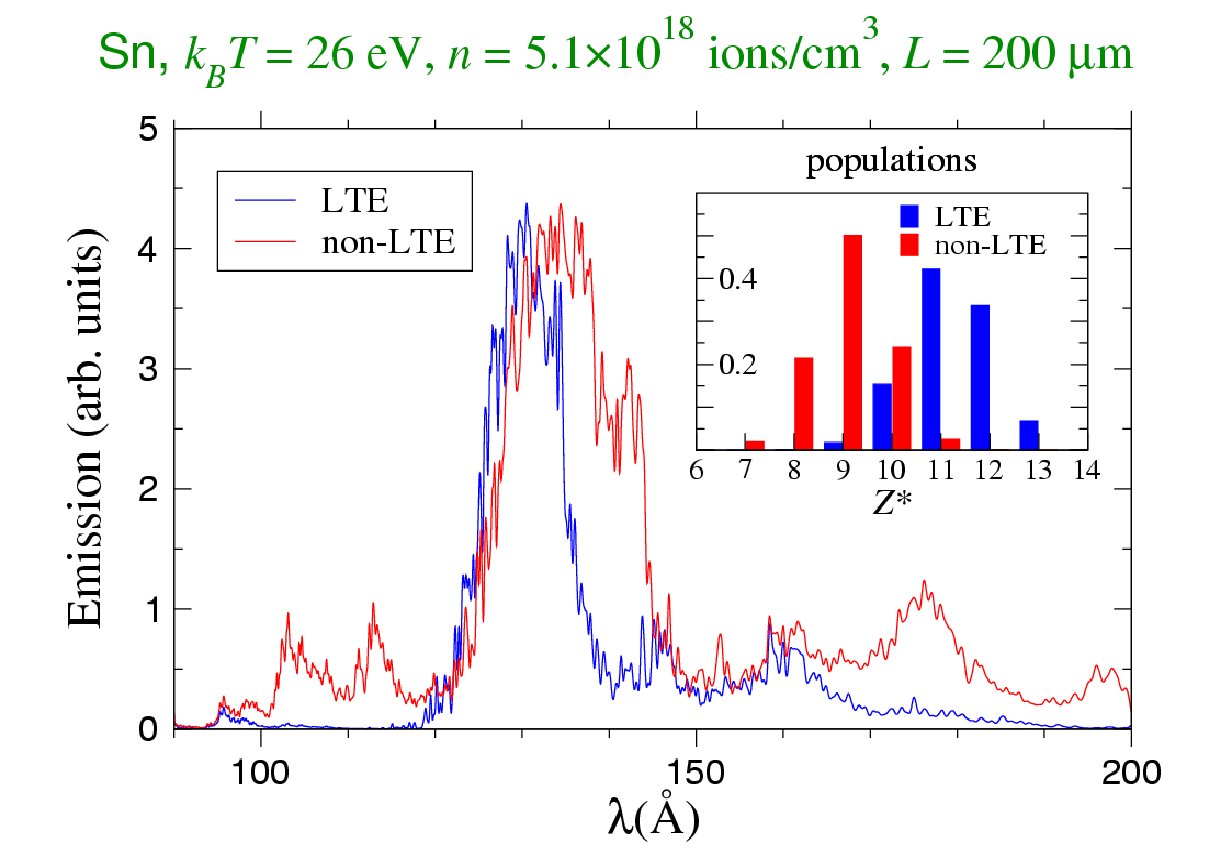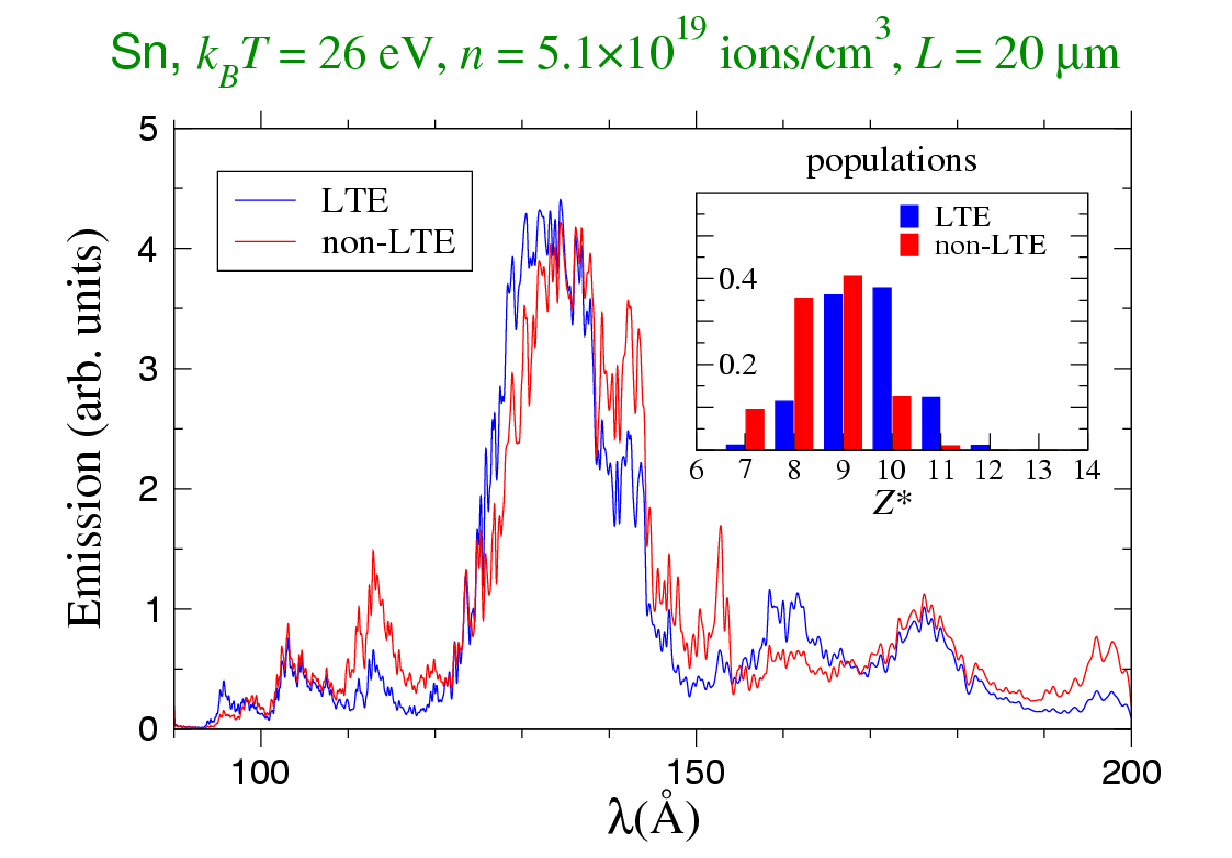
Figure 4a: HULLAC computation of the emission of a 0.001 g/cm3 tin plasma: blue data, at local thermodynamic equilibrium, red data with ion populations given by Colombant and Tonon model [8
Among the various hypotheses made to get the plasma emission, the one about LTE deserves special scrutiny A simple model based on comparison of radiative and collisional de-excitation shows that a condition to ensure LTE is ne (cm-3) > 1.6x1012 Te1/2 E3, Te being the electronic temperature and E the transition energy in eV. For the analyzed transitions with E around 92 eV, this would require an electronic density around 7x1020 cm-3 to get LTE, i.e., about 7x1019 ions/cm3, while, in figure 3 for instance, the ion density is 5x1019 ions/cm3, which fulfils only marginally the LTE hypothesis. To go beyond LTE hypothesis, one may resort to several approaches. The most complete consists in developing a collisional-radiative model: one computes for a given set of ions the radiative (spontaneous emission, photoionization), autoionization and collisional (excitation and ionization) rates and one solves a linear system called rate-equation systems. This method, with detailed levels or configuration average is presented elsewhere and is still under active development. A simpler approach consists in assuming that, for a given ion, the various level populations are at LTE and therefore obey Boltzmann law, while the ion populations are given – instead of Saha law – by a simple collisional model given by Colombant and Tonon [8]. This model includes only collisional ionization, three-body recombination (inverse of the previous process) and radiative recombination, the rates of which are given by simple universal semi-empiric formulas. With this hypotheses, one obtain in tin the emission spectra plotted in figures 4a (ni = 5,1x1018 ions/cm3) and 4b (ni = 5,1x1019 ions/cm3). The ionic distribution is also given in the insert: one notices that out of LTE the average plasma charge is lowered and that the 130–140 Å band is broader, mainly from the fact that the Sn9+ ion, chiefly responsible for the emission around 135 Å, is more populated. Lastly, one verifies on figure 4b that by increasing the ion density by a factor of 10, non-LTE ionic distribution (and therefore emission) moves perceptibly closer to LTE: increasing density electron-ion collisions are more frequent and therefore favor the plasma thermalization [9].
[9] M. Poirier, T. Blenski, F. de Gaufridy de Dortan, F. Gilleron, J. Quant. Spectr.. Rad. Transfer 99 482 (2006).



